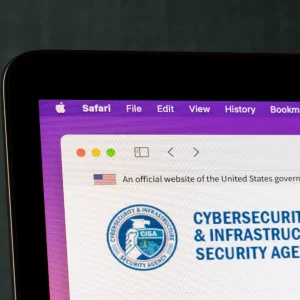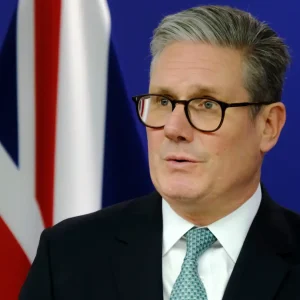
"Societies across the world urgently need to transform healthcare and create sustainable, value-based systems," said Jeroen Tas, CEO of connected care and health informatics at Philips.
Talking to CBR, Tas highlighted how connected healthcare is proof that IoT can deliver valuable human outcomes beyond the connected fridge. The IoT healthcare market is one where tremendous growth will without a doubt attract many heavy weight players.
After all, with a CAGR of 38.1% until 2020, this $163bn market-to-be is going to touch pretty much everyone’s life in one way or another.
Tas told CBR: "The potential impact of connected care technologies is best illustrated by considering some of the many healthcare challenges facing the world today.
"Cardiovascular disease is predicted to grow by 10% annually over the next 20 years; in the developed world, one in three people will develop cancer during their lifetime; globally, 334 million people have asthma and 65 million people have moderate to severe chronic obstructive pulmonary disease."
The abovementioned figures are big and they are not about money, they are about people, and that is what make connected healthcare such a crucial thing to get right.
Tas continued to say that integrated health solutions, driven by connected care technologies, are a key enabler to help to deliver this value-based healthcare, combined with other elements.
"These solutions hold the key to improve the lives of billions of people, improving their quality of life and empowering them to take control of their own health."
This becomes specially important as around the world, healthcare systems are under strain as populations swell and grow older, helped by the extension of sanitation and medical services, as well as breakthroughs in technology and disease treatment, according to Tas.
Consequently, global resource constraints on health systems are driving a shift to value-based healthcare to reduce cost, increase access and improve outcomes.
Other aspects driving the growth of connected healthcare is the ageing of populations and the rise of chronic conditions leading to the need for cheaper and more efficient health services. By 2050 the proportion of the world’s population over 60 will nearly double, according to the World Health Organisation.
Consumers thirst for new technologies, like wearables, has also sparked an interest for individuals to engage in their health, and as Tas explained, this creates opportunities to focus on prevention, rather than just cure.
Also speaking to CBR, Susan Taylor, VP global healthcare business line leader at Pegasystems, said that the proliferation of consumer wearables and sensors is allowing for a huge leap forward in connected healthcare.
She said: "It opens the door for health organisations to embrace the power of the IoT to advance care management in new ways, using connected medical devices such as pulse oximeters, glucometers, body scales and of course, fitness trackers.
"The combination of clinical data and advanced analytics that we’re starting to see means organisations can now better leverage connected devices and health data to personalise care and improve health outcomes."
Digitalisation is also shifting value from devices to software and services. This is allowing stakeholders from across the healthcare continuum to leverage insights that drive healthier behaviour and optimise care coordination across health conditions.
Tas said: "These trends are driving two major opportunities to evolve global healthcare, through the industrialisation of care, which optimises the building blocks of healthcare to enable health systems to deliver better outcomes at scale; and personalization of care, whereby data and digitalisation are leading to increasing self-management and individualised treatment paths."
Jeroen Tas, CEO of connected care and health informatics at Philips
How do you build a connected health environment and scale it?
Just like all the other IoT verticals, when things – devices and services – start to get connected, the mesh quickly grows into something of huge propositions.
Disruptors like cloud and analytics, allied with the aforementioned connected IoT devices and services, is the backbone of connected health.
Philips and Pegasystems have recently taken all this on board and entered a joint collaboration to enable managed care service providers and accountable care organisations to leverage connected devices and health data to personalise care and improve health outcomes.
The companies connected Pega Care Management Application to the Philips HealthSuite Cloud platform, so caregivers can remotely manage care with connected health applications to provide immediate access to a patient’s health status.
Taylor said: "This means the entire care team, from physicians, nurses, home caregivers to care managers, can identify potential health issues in real time and coordinate with each other to provide the best response to intervene.
"Ultimately, these solutions will enable care managers and insurers to increase the quality of patient care and decrease hospital readmissions, while also lowering total costs."
She explained that Pega’s Care Management Application is essentially a case management solution, which underpins the process-driven administration aspects of patient healthcare.
"Pega Care Management will provide a patient’s health management team with a holistic view of the patient’s health and care plans so they can extend personalised managed care in any setting – from ambulatory care, to home care, and even on the go."
In terms of scaling connected healthcare environments, partnerships can help enable new levels of collaboration across the entire health continuum to deliver differentiated personalised care that improves patient outcomes.
Taylor said: "We are entering a new paradigm in healthcare, one in which devices and wearables can help care teams extend their services well beyond the doctor’s office. "
Tas added that to fully capitalise on the opportunities that connected care technology presents, healthcare systems and the institutions within them will have to strive for a measure of interoperability.
"The adoption of common standards and terminology in healthcare technology will be crucial to connected care and giving patients access to data they need to inform health decisions," he said.
"Over the longer term, greater technological adoption and information exchange should empower and encourage health care systems to experiment with new business models that amalgamate data and use metrics to enhance efficiency and service quality, such as bundled payments and accountable care."
UK at the forefront of connected healthcare but adoption barriers continue
To help understand the connected healthcare landscape, Philips conducted an international survey of more than 28,000 people, including 2,659 healthcare professionals and 25,355 adult patients.
The ‘Future Health Index’ unveiled that the UK ranks nine in terms of its state of readiness to benefit from integration across healthcare systems. The USA, the Netherlands and China lead the table.
Tas said: "Despite perceived inefficiencies and issues with access, patients in the UK are significantly more positive about their healthcare system than in many other countries in the world.
"To usher in widespread adoption of healthcare integration and connected care technologies, concerns with cost and bureaucracy must be addressed. However, there is a distinct opportunity to empower patient ownership of healthcare via integrated health."
Philips is also doing work in the UK around this sector. The company has entered a partnership with Liverpool CCG to help patients with chronic conditions use technology to manage their conditions at home.
"The study provides evidence that health technology and better integration could significantly reduce pressure on acute care if rolled out nationally," Tas explained.
Despite the good results obtained in the index, there are still barriers that need to be overcome in regards to connected healthcare adoption.
Tas highlighted that patients and professionals are divided about patients’ ability to monitor themselves.
He also said that data is proliferating, but does not travel. "Sharing data between institutions or agencies is a key step in integrating healthcare."
Furthermore, bureaucracy is still seen as a major stumbling block and there is still a lot of work to do in terms of building trust between healthcare professionals and patients and their national healthcare systems.
Taylor said: "This degree of remote healthcare monitoring is the next level in connected living."








